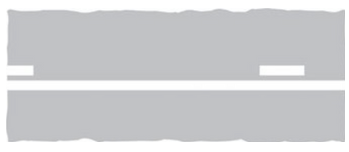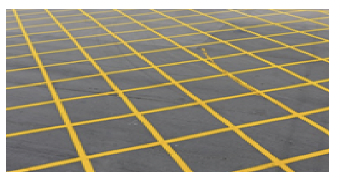Many of us have been out driving and see some road markings and feel unsure about what they are telling us. Road Markings, or “Road Furniture” are like a blueprint for our onward journey. Reading the road is essential for being a courteous driver and reducing the worry about what could be around the corner. Alongside road signs, the lines on the asphalt are a great indication of the overall safety of the road.
On a rural road, especially ones without street lighting, reading the road lines will tell you in advance of impending corners or other hazards. The more markings on the road, the more challenging the road could be. If you are a new driver, chances are you still remember your lessons, but if you are a seasoned driver, can you honestly say you have looked at a copy of the Highway Code recently? Unless you drive on roads with lots of markings daily, it is easy to assume you understand them when you may be reading them incorrectly. This is a significant cause of accidents involving overtaking or too much speed when cornering.
Understanding the road markings is essential as they help smooth traffic flow and help prevent collisions on all road types. An Advanced/Defensive course with one of our tutors will give you the right coaching to never feel unsure again, often teaching techniques that you would never have covered when learning to drive.

Double white lines – nearest line to you is broken
Rule 128 of the Highway Code states you can cross the lines to overtake if it is safe, and you can complete the manoeuvre before reaching a solid white line on your side.
Double white lines where the nearest line is solid
Rule 129 of the Highway Code states you must not cross or straddle these lines unless it is safe and you need to enter adjoining premises or a side road. You can cross the line if needed as long as the road is clear to pass a stationary vehicle, overtake a pedal cycle, horse or road maintenance vehicle as long as they are travelling at 10 mph or less.

Areas of white diagonal stripes
White diagonal stripes separate lanes or protect the traffic turning right. Drivers should not enter the area unless necessary and can see that it is safe to do so.

Centre hazard warning line and centre lines
Hazard warning lines are similar to centre lines, but the painted sections marking these hazard lines are longer. You will see markings like these on most rural roads indicating possible hazards such as a bend, hidden dip or something else. When centre lines change to hazard lines, you know there is an increase in hazards.

White double broken lines
These double broken markings are found at major junctions and mini-roundabouts. They indicate that you need to give way to traffic. On many occasions’ drivers will not have to stop at this line, but it’s essential to keep looking for possible traffic crossing the path. On the other hand, a single broken white line is a reminder to stop and give way to traffic approaching from the right.

Yellow Box Junction
The yellow boxes filled with crisscrossing yellow lines are known as box junctions. These appear at busy junctions to ensure the flow of traffic. The exit road must be clear for you to enter the box, but you can wait in one if oncoming traffic or other vehicles are preventing your right turn. Many accidents occur when drivers do not understand the yellow box junction etiquette.
These are just a few road markings – for a full list consult the Highway Code.
